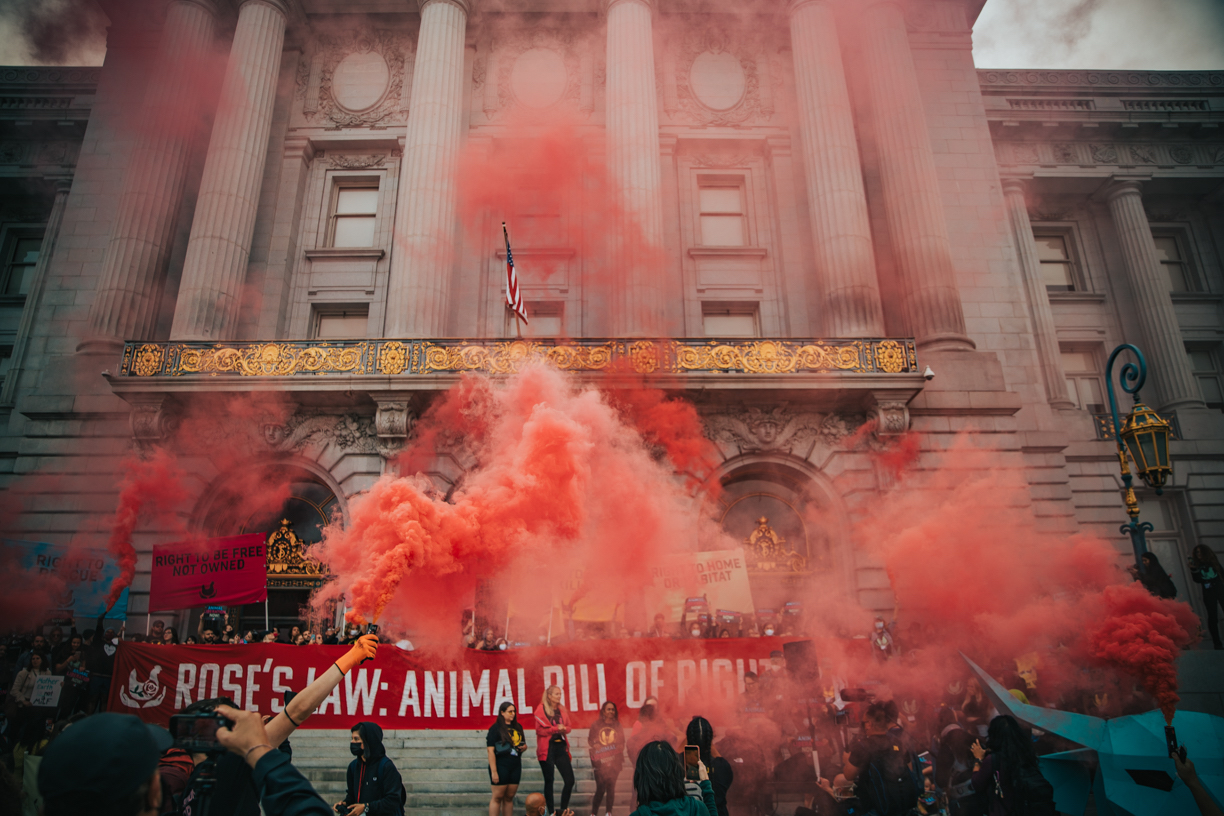Why Vegans Should Pick Up a Protest Sign
By Julianne Perry
What does one learn from poring over the last 100 years of global struggles? That the most effective mechanism for change is nonviolent civil resistance, where ordinary people take to the streets to demonstrate their dissatisfaction with the status quo. And it takes a surprisingly-small number of activists to usher in change, so every person matters.
DxE sat down with Dr. Erica Chenoweth (our notes here), who has spent years cataloguing such campaigns and struggles. Dr. Chenoweth has found that all it takes to overthrow a dictator is having 3.5% of the population engaged in sustained, nonviolent direct action. This is also true whether you are fighting for labor rights or fighting to oust a foreign military. The most powerful thing we can do to create massive social change is undertake nonviolent civil resistance.

For example, how did Kosovo eradicate the 1,000-year practice of blood feuds? By utilizing nonviolent blockades and sit-ins, mostly led by women, at the sites of violence, these disruptions led to the end of this practice in just 10 years.
So how can we make this change happen for animal rights?
Mass participation. Dr. Chenoweth said she believes the same principles should apply for the animal liberation movement. Varying polls show that 5% of the US population has chosen to no longer eat animals’ bodies. We already have enough support to change everything! If everyone who has made this lifestyle change added a commitment to sustained engagement in activism, we would achieve animal liberation, likely in less than 30 years. According to Chenoweth’s research, if we want to free all animals, we need to stop asking people to go vegan, and start asking them to march in the streets.
Other articles

Tulare County Dairy Farms Are Poisoning Latino Communities

The Case for Systemic Change




